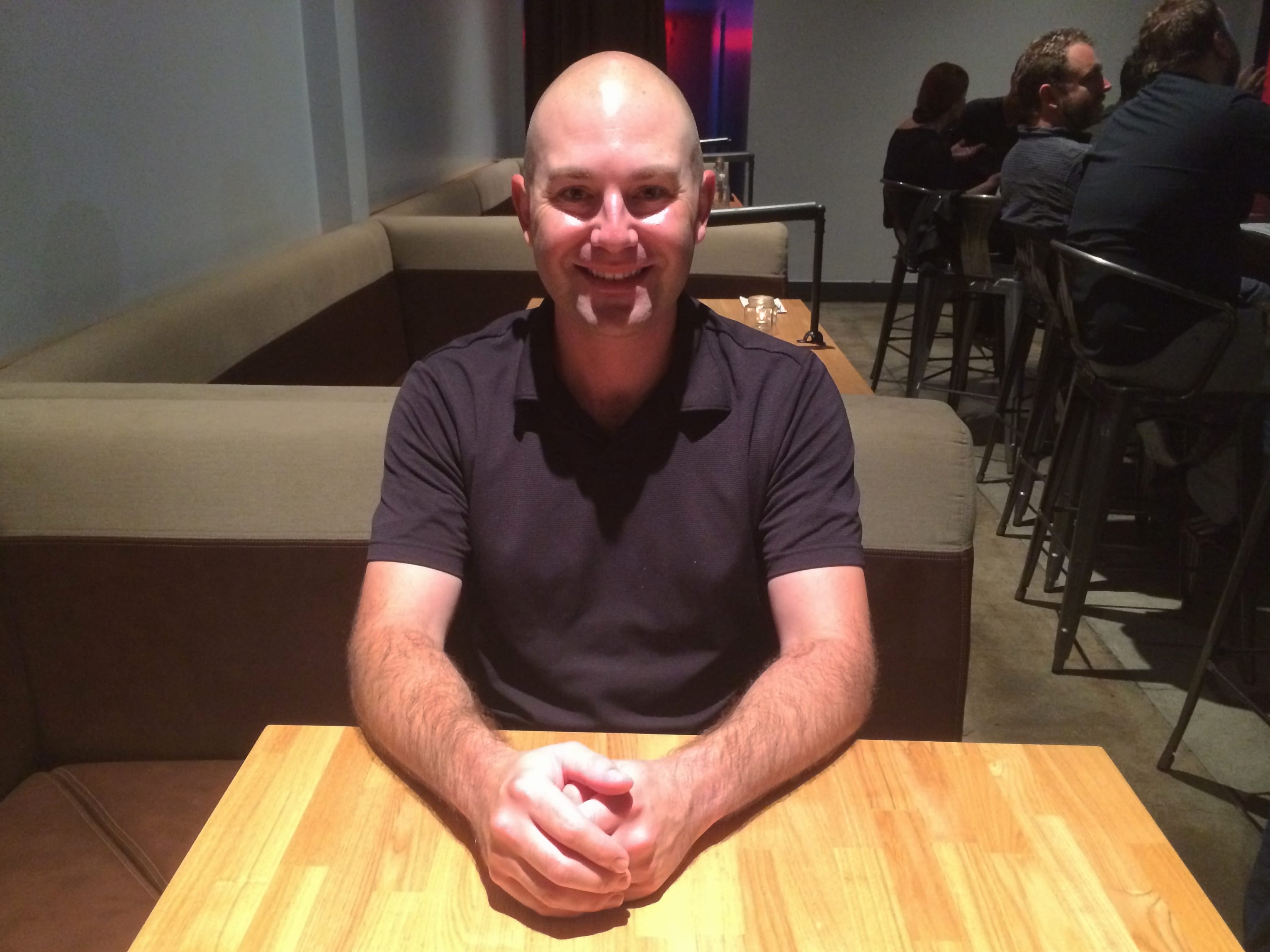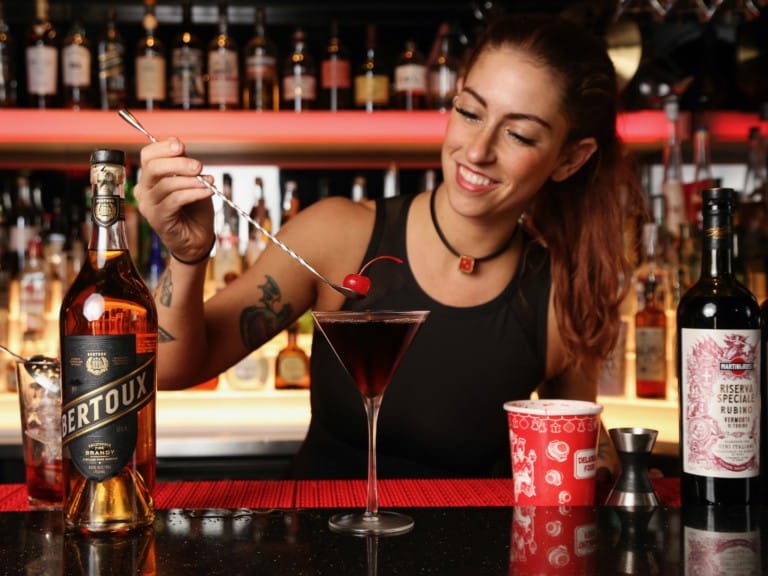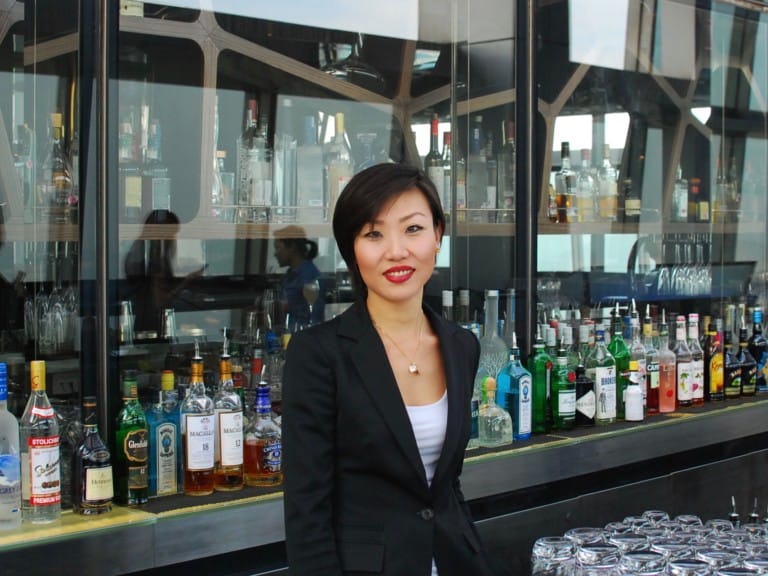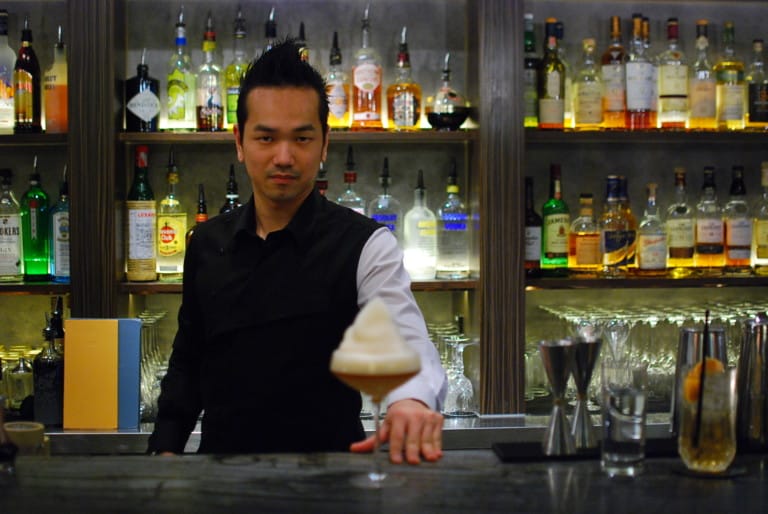INTERVIEW CONTINUED FROM PREVIOUS PAGE
JL: What is the most recent malt cocktail you developed, and what was your inspiration?
The most recent one I’ve come up with was the bramble. I love the bramble and have had it with fresh blackberries and sugar, and I’ve had it with crème de mûre. I love it with both…When you make it with the blackberries, it’s a little more tart, because depending on the season, depending on the berry, it’s a little different. When you make it with crème de mûre, it’s on the sweeter side, since it’s a concentrated form of blackberry. It’s a blackberry liqueur, like crème de cassis. I wanted to float in the middle. Looking at what the bramble’s all about, it’s speaking to something refreshing, a fix, but it’s not quite a fix. It’s in-between. That’s why I wanted to work with the blackberry ale (Ballast Point Sour Wench) and try to experiment. Flavored ales are extremely interesting. You can go from very tart to very sweet, and there are variations all in-between. It’s a straightforward build. It’s a basic, basic cocktail, but you can make all kinds of variants therein…Working with beer is like having an unending flavor account. You have all these great things, and aren’t limited to what’s just on the shelf. Working within those confines, you can alter the drink extraordinarily, just by adding an ounce-and-a-half or this, or an ounce-and-a-half of that. You have your basic line of, “This is what the cocktail’s built upon.” Then you can vary it up as many times as you like.
JL: What types of beers do you prefer to drink when you’re not working?
BW: I’m a huge fan of sours. I’ve always been. And I also like a lot of the new pilsners that are coming out, because they speak more to the idea that. In the United States, we’re used to American adjunct lagers. We’re used to helles lagers. Things that are very light. Some of the original Czech pilsners are actually kind of mead-y. They’re a little bit different from what we would understand as a “light beer.” It’s light in terms of the texture, but it’s not light in terms of the flavor. These lagers are amazing, with toasted barley notes, caramel notes, but still very light, not heavy at all on the palate. You can have two or three and you don’t feel like you’re weighted down. I love that American brewers are also experimenting with fruits and grains and spices. The Belgians have done that for hundreds of years. Because of the breadth of product we have in the United States, it’s amazing what people are coming up with. Kumquat and Kaffir lime? Cardamom ginger? Really interesting. Then, because we have the advantage of bourbon barrel and rye barrel aging, now we have a very interesting mix. We can take a Viennese lager and throw some cardamom, ginger and cinnamon in there, age it in a rye barrel and put it on nitrogen. Now we’ve got a serious culinary glass of beer, but explaining that to people takes a moment because they’re used to, “Can I get a light beer? Can I get a dark beer?” No, let’s have a conversation about what it means to be a craft brewer, what it means to be a craft beer connoisseur.
JL: How do you go about naming your cocktails?
BW: That’s the hardest thing, always, is to name my drinks. It’s like asking me to pick between my kids. What’s the best name? What’s the right name? I try to play on phases. I went through an ’80s movie phase. I did a little bit of a music thing for awhile, ’90s albums. Now I base it on the ingredients and what the beer is. Some of the drinks you’ll see for this event are An Apple A Day, The Privateer. Speaking to what the base spirit is, and also what the beer is as well.
JL: Do you brew yourself?
BW: I’ve been brewing since I was much younger.
JL: What was the last beer that you homebrewed?
BW: The last beer that I made was a Belgian strong ale, and I also did a Flemish red ale, two styles that are very, very difficult to nail down, because they are so active. They take a very, very small amount of time to ferment, and they go south very quickly. The Belgian goldens, because there’s so much sugar in them, if you don’t cellar them properly, and you don’t bottle them at exactly the right time, they will go from delicious to not delicious very, very fast.
JL: How did those two batches turn out?
BW: Very, very well. I think I’ve nailed the bacteria. I’ve nailed the yeast as well. There’s a layering process I’m getting into now, layering yeast, layering hops. One, you do dry-hopping. One, you use multiple yeast strains. How do we pitch our yeast? How do we pitch our bacteriums? When do we do it? Those kinds of things are extremely important. Much like we’re building a pastry, you’re building a layered cake, you have to start with certain ingredients first because if you start top heavy, it’s going to fall over. If you start bottom heavy, it’s going to become mush. It’s finding that fine balance of, “Now we add this, now we add that.” Okay, it’s done. Bottle it and wait. Nature takes its course, and if we’ve done our math right, done our due diligence about keeping everything clean and sanitized, you’ll find it makes an amazing beverage, and you’ll realize what beer can be all about.









Blog Comments
Michele Beaulieu Naquaiya
October 12, 2014 at 4:27 PM
Congratulations Brady and Happy Birthday!